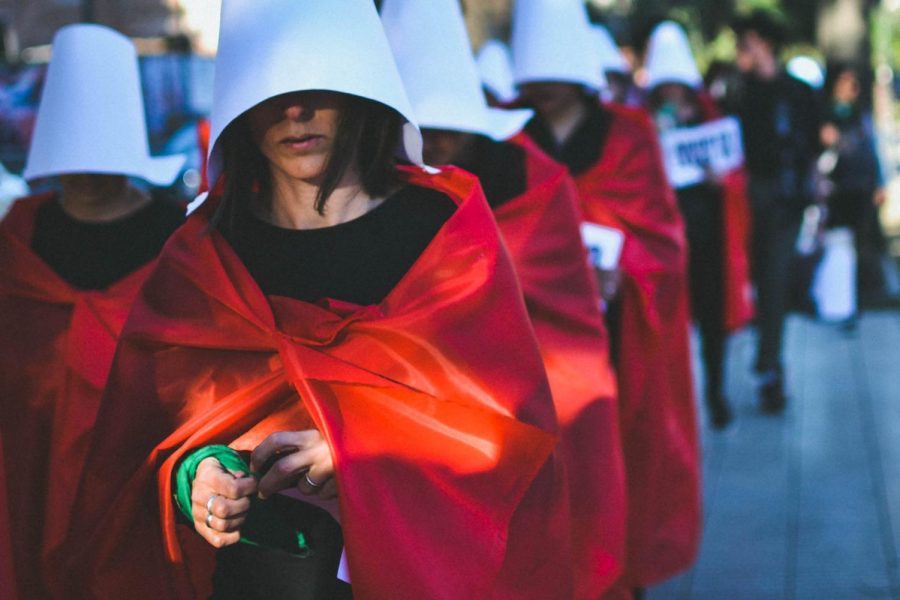“The Handmaid’s Tale” by Margaret Atwood is a chilling classic that continues to reign true today
February 26, 2021
“The Handmaid’s Tale” by Margaret Atwood is a novel with a powerful and scarily realistic portrayal of institutionalized misogyny and an oppressive government. Even in its publication in 1986, “The Handmaid’s Tale” has always seemed all too plausible. Reading this in the current political climate, everything feels less dystopian, less speculative, less fictional. It no longer takes a long stretch of imagination to visualize a scenario where aspects of the story unfold around us in real-time. In a society where female autonomy is often debated and questioned, the circumstances that occur in this story ring true today.
The narrator, Offred, is a Handmaid in the Republic of Gilead, in former New England. Due to pollution and environmental factors, the amount of fertile women has decreased exponentially. Men in power have taken complete control of women in both body and mind to ensure an increase in declining birth rates. Fertile women are owned by the state, by the men in power; their bodies are a set of reproductive organs. Atwood suggests that they are objects, and reinforces this in the names of the Handmaids. Offred is “Of-Fred”, her commander. Women are simply objects to be used, controlled, and destroyed once their service is complete.
I have been moved by books in the past, but no book has ever emotionally drained me to such a degree. It was the small comments, minor details that made me realize how much so. For example, Nick, an employee of Offred’s commander, says:
“Better never means better for everyone… It always means worse, for some.”
Atwood expands on the true meaning of progression within society. Objectively speaking, the Republic of Gilead is doing well, with flourishing birth rates and an abundance of resources. However, those who suffer as a result of these are oppressed and controlled. The survival of the Republic of Gilead was ensured by the suffering of Handmaids, and Atwood makes sure we are aware of that.
This book crept under my skin. Every word feels so surreal, so bleak, so utterly terrifying. There are no monsters, no ghouls, no supernatural elements, either. The scariest thing about this book is how possible it is. Offred works a daily routine; grocery shopping, cleaning, and sitting in her bare room. She wears a long red cloak to signalize her identity as a Handmaid. A jutting bonnet forces her to keep her eyes on the ground. She even attends monthly doctor’s visits to ensure her fertility and ability to reproduce. No aspect of her life is her own. Offred says,
“I used to think of my body as an instrument of pleasure, or a means of transportation, or an implement for the accomplishment of my will . . . Now the flesh arranges itself differently.”
This story’s wording is so dangerous. Atwood chooses her words in such a manner in which, somehow, we are not as enraged as one might think. Offred’s words were so comfortable, so monotone. I only felt anger once I shut the book. I was not disgusted by the oppressors in this novel while reading. Their actions suddenly sounded justifiable. The argument they present is a cold, logical solution. It was terrifying to get so comfortable in the setting of this book. I felt ashamed being so okay with it. It is such word choice that makes “The Handmaid’s Tale” such an influential story. The way in which oppression and corruption are swept under the rug and dealt with such apathy goes to show the nature of humankind.
This book was worrying, thought-provoking, and disturbing, in the best way possible. If you’re thinking about reading this, stop thinking, and do it. I will issue one warning, however; do not expect some fulfilling ending. It made the story even more powerful and guaranteed that Offred and every woman like her must be remembered, in fiction or reality.



